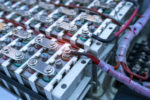
Visit Our Sponsors |
|
|
|
|
|
|
|
|
|
|
|
|
|
|
|
|
|
|
|
|
|
|
|
|
|
|
|
|
|
|
|
|
|
|
|
|
|
|
Mike Roeth, executive director of the North American Council for Freight Efficiency (NACFE), details advances in technology that can result in lower carbon emissions, improved fuel economy and reduced costs for truckers.
To get to zero emissions by commercial trucks “will be the big step-change,” Roeth says. Electric trucks and green hydrogen are the “Holy Grail” for carriers striving to transition completely away from carbon-intensive operations. But there are plenty of opportunities for making progress in the near term.
Improvements to diesel-powered trucks can improve tractor-trailer fuel efficiency by up to 40%, Roeth says. Interest in that technology has grown with higher fuel prices, as well as new regulations in the U.S. and Canada on limiting greenhouse gas emissions, and requirements for producing cleaner trucks. The solution will require improvements in many areas, including engine design, tires, aerodynamics and idle reduction.
Electrically powered trucks are better for drivers as well, especially at a time when labor is in critically short supply. “Drivers love them,” says Roeth. “They’re smooth, quiet and easy and fun to drive. Drivers feel less tired at the end of the day.”
Widespread electrification of the biggest rigs — those engaged in long-haul transit — will take longer to realize. In the meantime, the technology can be applied to trucks that serve smaller areas and local destinations, and can return to home base at day’s end for charging. “A 200-mile heavy-duty electric tractor is something you can order today,” Roeth says. “Three hundred miles is the very next horizon, but to get to 400 or 500 miles could be a challenge.”
Lack of adequate charging stations is the biggest obstacle to making progress toward electric big rigs today, but the solution can take several forms, depending on length of haul and areas served, Roeth says.
RELATED CONTENT
RELATED VIDEOS
Timely, incisive articles delivered directly to your inbox.

